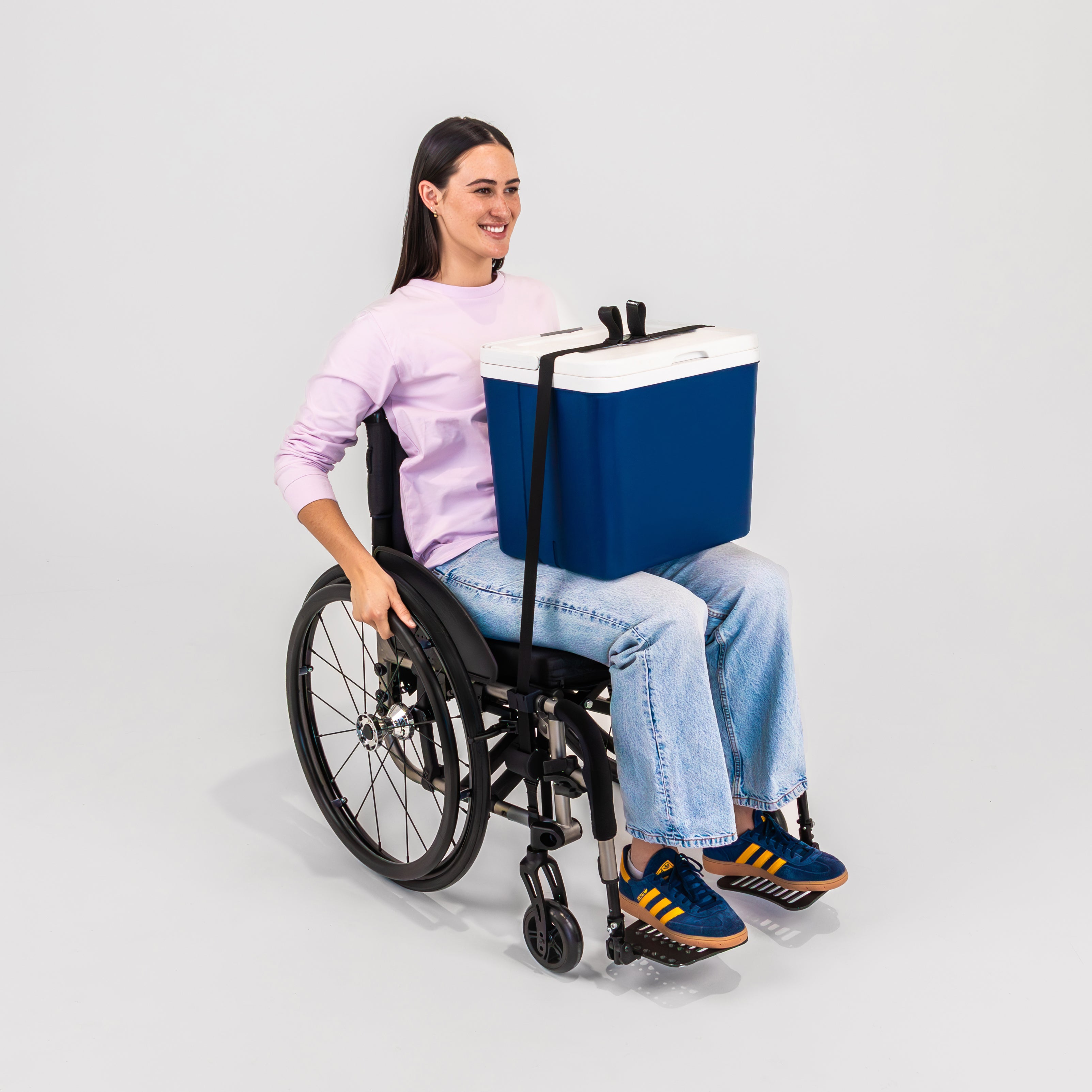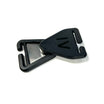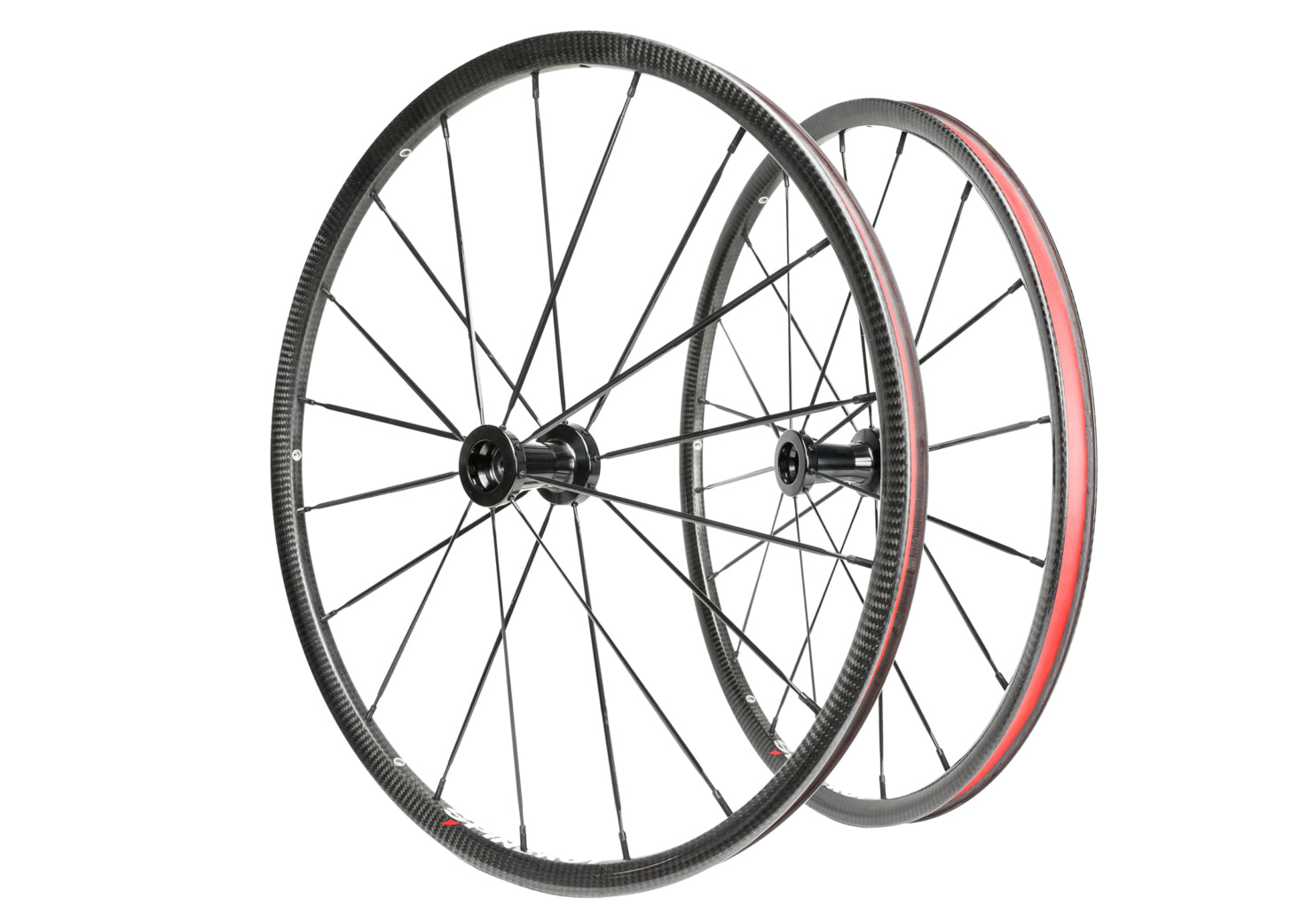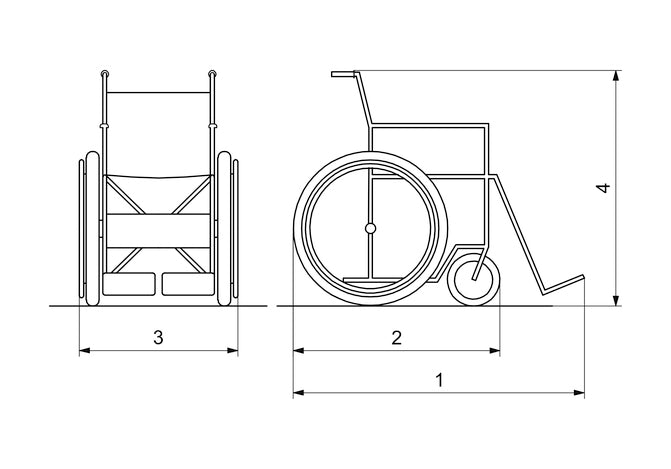Navigating the world of mobility aids can be challenging, especially when understanding the intricacies of wheelchair components. One component that plays a pivotal role in enhancing the experience is the wheelchair wheel rim. They are more than just a part of a wheelchair; they are the key to independence, mobility and looking good out on the streets (maybe don’t do what this bloke has, though).
We’re breaking down the factors you want to consider when choosing new wheelchair rims.
The significance of wheelchair wheel rims often goes unnoticed. They are not just about aesthetics or an add-on accessory. They play a critical role in the overall functionality of a wheelchair, impacting its maneuverability, comfort, and even the user's physical health.
Understanding the different types, materials, and designs of wheelchair wheel rims can significantly improve your wheelchair experience, offering a smoother ride, better control, and improved independence.
Types of wheelchair wheel rims.
Wheelchair wheel rims come in various types, each designed to meet different needs, preferences, and wheelchair models. There's an option for everyone, from standard rims to ergonomic hand rims, coated hand rims, and even custom-made designs. Here’s the breakdown:
Standard Rims
These are the primary rims that come with most manual wheelchairs.
They are typically made of durable metal, such as aluminium or steel.
Standard rims require the user to have a good grip and hand strength, as their surface can be hard and slick.
Ergonomic Hand Rims
These rims reduce strain on the user's hands and wrists.
They are shaped to fit the hand's natural curve, making it easier to grip and push.
Ergonomic rims can help users with limited hand strength or dexterity to propel the wheelchair more efficiently.
Coated Hand Rims
These rims are covered with a special coating to provide a better grip.
The coating can be made of various materials, including rubber and vinyl.
Coated rims are particularly useful in wet weather as they can prevent the user's hands from slipping off the rims. They can also help reduce the risk of developing blisters and calluses from the repetitive motion of propelling a wheelchair.
Each type has its unique features and benefits, enhancing wheelchair maneuverability and enabling users to navigate different environments with confidence and ease.
A rule of thumb we’ve found is that the more you’re willing to spend and customise the more you’ll get out of it.
The material world: aluminum, plastic, and steel wheel rims.
Wheelchair wheel rims are typically made from three primary materials: aluminium, plastic, or steel. Each material offers different benefits and drawbacks.
For instance, aluminium rims are lightweight and easy to maneuver, making them ideal for active users. In contrast, steel rims are more durable and sturdy, suitable for heavy-duty use. Plastic rims, on the other hand, are cost-effective and require minimal maintenance, making them a popular choice if budget is the issue.
Design aspects: size, spokes, and ergonomics:
The design of the wheel rim, including its size, number of spokes, and ergonomics, can also significantly impact the wheelchair's performance and the user's comfort. Larger rims can make it easier for users to propel themselves, while more spokes can add to the wheelchair's stability. Ergonomic designs featuring contoured or coated surfaces can offer a better grip, reducing strain on the user's hands and wrists.
Maintenance and care for wheelchair wheel rims.
Maintaining your wheelchair wheel rims is crucial for their longevity, performance, and safety. Regular checks for wear and tear, timely replacements, and keeping them clean can go a long way in ensuring your wheelchair remains functional, safe, and comfortable to use. Additionally, using the right cleaning products and techniques can help prevent damage and prolong the lifespan of your wheel rims.Wheelchair wheel rims are an essential yet often overlooked aspect of a wheelchair that can significantly influence a user's quality of life, mobility, and independence. By understanding their types, materials, and designs and choosing the right ones for your specific needs, you can enhance your wheelchair experience, allowing you to navigate your world with confidence and ease.
Remember, adapting to a wheelchair can be challenging, but you can adapt and defy with the right components, like wheel rims.










Leave a comment
All comments are moderated before being published.
This site is protected by hCaptcha and the hCaptcha Privacy Policy and Terms of Service apply.